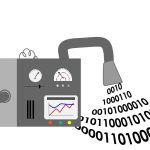
Data mining, also known as data discovery or knowledge discovery from databases (KDD), continues to be a vital discipline in the modern technological landscape. It involves analyzing data from various angles and distilling it into actionable insights. While the terminology has evolved, the core principles remain steadfast, serving as a critical foundation for industries leveraging vast amounts of data.
As we navigate a world dominated by AI-driven analytics and real-time data processing in 2025, the relevance of data mining will only grow. Here, we'll revisit the fundamental aspects of data mining and explore its applications today.
The Foundations of Data Mining
Data mining can be broadly categorized into two primary methodologies:
- Descriptive Data Mining
This approach focuses on identifying groups, clusters, and associations within data. Descriptive mining enables actionable insights by uncovering patterns. For example:- Identifying customer segments based on purchasing habits.
- Highlighting product associations, such as "customers who buy X often buy Y."
Outputs from descriptive mining often take the form of:
- Conditional statements: “If-then-else” rules.
- Scoring systems: Similar to those seen in self-assessment tools.
The results frequently include measures of quality, ensuring that clusters and patterns are meaningful and actionable.
- Predictive Data Mining
Predictive mining leverages historical data to forecast future outcomes. This methodology answers questions like:- What factors indicate a higher likelihood of customer churn?
- Which marketing strategies will yield the highest conversion rates?
While some predictions may seem intuitive, predictive data mining ensures that these tendencies are backed by data-driven evidence.
The Technologies Driving Data Mining
The advancements of the last decade have solidified data mining's place as a cornerstone of business intelligence. Three key technological pillars enable its application in 2025:
- Massive Data Collection
With IoT devices, social media platforms, and digital transactions generating unprecedented amounts of data, organizations now have access to datasets of unparalleled size and granularity. - Powerful Multiprocessor Computers
Cloud computing and distributed processing have dramatically improved the ability to analyze large datasets quickly and efficiently. - Advanced Data Mining Algorithms
Modern algorithms, many of which leverage machine learning, have made it easier to uncover patterns and predictions with higher accuracy and relevance.
Thearling's Five Types of Data Mining
Kurt Thearling identified five primary techniques that remain foundational to data mining in 2025:
- Decision Trees
- A visual tool for mapping decisions and their consequences.
- Useful for both predicting outcomes and analyzing conditional probabilities.
- Nearest Neighbor
- Measures the similarity or distance between clusters of data.
- Often used in hierarchical clustering to group similar data points.
- Neural Networks
- Modeled after biological neural networks, these algorithms excel at identifying non-linear patterns and making complex predictions.
- Rule Induction
- Extracts formal rules from observed data.
- Bridges machine learning with practical applications by capturing both global and local patterns.
- Cluster Analysis
- Groups similar objects into clusters for descriptive analysis.
- Ensures that objects within a cluster are more similar to one another than to objects in other clusters.
Data Mining in 2025
Today, data mining is more sophisticated, integrating seamlessly with technologies like AI, real-time analytics, and predictive modeling. The ability to uncover patterns and make forecasts is critical across industries, including finance, healthcare, retail, and manufacturing.
Key advancements since 2012 include:
- Real-Time Data Mining: Processing streaming data for immediate insights.
- Explainable AI (XAI): Providing transparent reasoning behind patterns and predictions, making data mining results more accessible and trustworthy.
- Automated Data Discovery: Leveraging AI to autonomously identify patterns and associations, reducing the need for manual analysis.
 Closing Thoughts
Closing Thoughts
As the tools and methodologies for data mining continue to evolve, one thing is certain: the discipline will remain a cornerstone of technological advancement. Its ability to transform raw data into actionable insights empowers businesses to make informed decisions, optimize operations, and anticipate future trends.
Stay tuned for deeper dives into these methodologies as we explore their practical applications in the ever-changing technological landscape.
Blog by Mark Reynolds, updated December 2024.

